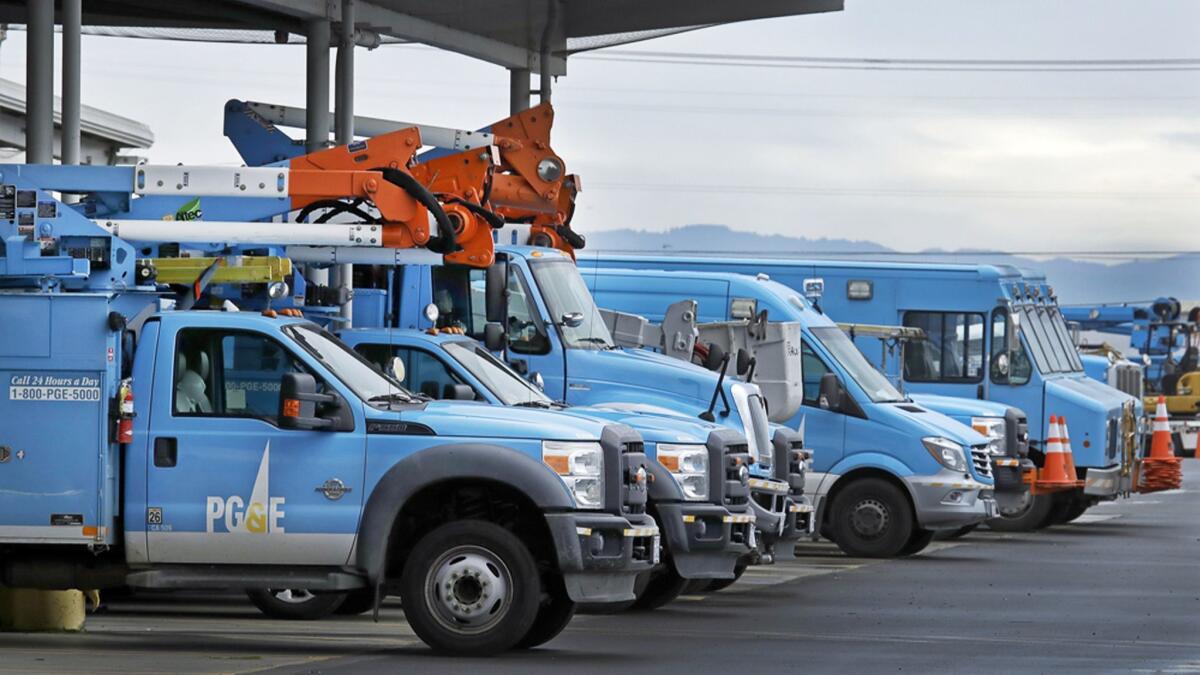California legislators want final say on utility bill increases following PG&E’s bankruptcy filing

Reporting from Sacramento — California lawmakers would carve out a key role for themselves in the bankruptcy of Pacific Gas and Electric Co. under a proposal introduced Friday in the Legislature.
The legislation marks the latest attempt by state officials to intervene in the reorganization of California’s largest utility, a process playing out in federal court that legislators fear could lead to higher bills for customers and leave wildfire victims uncompensated for losses.
The proposal would require the California Public Utilities Commission to seek approval from the Legislature for any increase in PG&E’s electricity rates. Customers took on the burden of billions of dollars in rate hikes after PG&E last filed for bankruptcy in 2001.
“In effect, this requirement gives the Legislature a say in how the reorganization impacts PG&E customers — who otherwise would have no representation in any consideration of rate changes,” said Sen. Jerry Hill (D-San Mateo), who introduced the bill.
PG&E cited some $30 billion in legal liability when it filed for bankruptcy protection in late January. The filing came after state investigators found the company’s equipment sparked dozens of wildfires in recent years, in some cases because of negligence. Under Chapter 11 bankruptcy, the company will continue to operate as it develops a plan to pay off debts.
The situation has frustrated California lawmakers, who spent months last year passing a bill to help offset PG&E’s legal liability for damages. Now legislators and ratepayer advocates are concerned that customers won’t have a voice in the bankruptcy case and may see electricity bills increase dramatically under the reorganization.
Hill’s office said the CPUC approved an 11 % return on equity for PG&E, secured through rate hikes, to improve the company’s credit rating more than a decade ago after the last bankruptcy. At the same time, the agency sanctioned nearly $8 billon in new financing that also fell on customers in addition to $4 billion approved before the filing.
Mark Toney, executive director of the Utility Reform Network, said the rate hikes resulted in bill increases of about $1,500 per customer over the course of nearly a decade.
“I can tell you that we’re worried it might happen again,” Toney said.
The bankruptcy has also commanded the attention of Gov. Gavin Newsom, who appointed a team to devise a plan in the spring detailing the best way for the state to navigate the bankruptcy and California’s energy future.
Days after the bankruptcy filing in January, a lawyer working on the governor’s behalf sent a letter asking a federal trustee overseeing the bankruptcy case to allow representatives of customers, wildfire victims and PG&E employees to serve on a committee of unsecured creditors that would have “significant power” to negotiate the reorganization of PG&E. The committee usually comprises groups holding the seven largest individual unsecured claims.
Toney said the judge obliged and gave customers a seat at the table, but he remains concerned that their voices will be overshadowed by Wall Street investors.
“One vote among 11 creditors would be a situation where we would be outvoted all the time, still get the blame for what the committee decided, and then be restricted on what we could say and do because we have access to private and confidential information,” Toney said.
The ratepayer advocacy group has asked for the court to appoint a committee made up strictly of customer representatives.
More stories from Taryn Luna »
Follow @tarynluna on Twitter.
More to Read
Get the L.A. Times Politics newsletter
Deeply reported insights into legislation, politics and policy from Sacramento, Washington and beyond. In your inbox three times per week.
You may occasionally receive promotional content from the Los Angeles Times.











